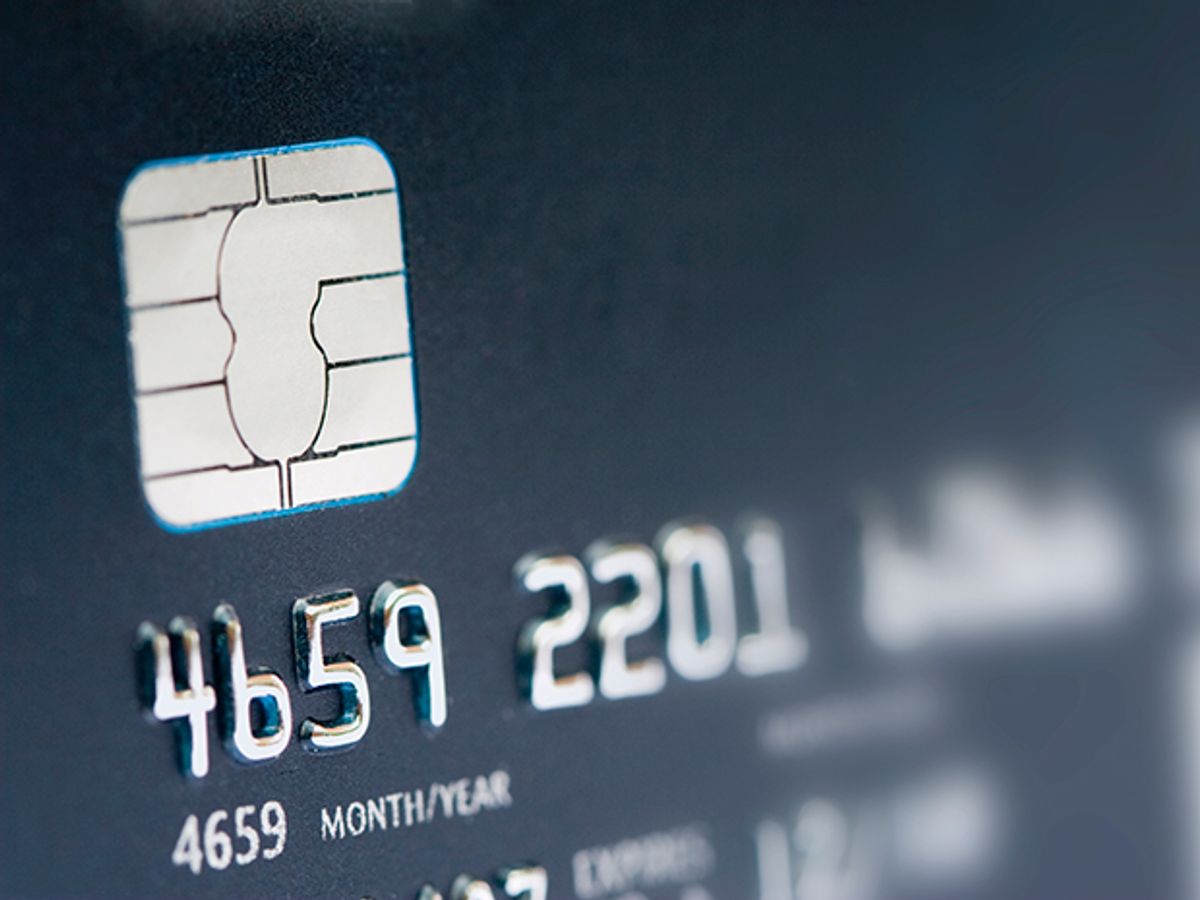Developed at IBM in the 1960s, rolled out in the 70s, caught on globally in the 80s, ubiquitous in the 90s, and now stepping aside—the magnetic stripe card has had a brilliant career.
But now the magnetic stripe card is going into forced retirement, replaced by the chip card after just too many security breaches that cost banks and retailers far too much money.
You probably already received chip card replacements for the mag stripe cards in your wallet; if not, you will soon. And retailers have been busily replacing their card readers—if they haven’t, as of today, 1 October, card-issuing banks will no longer eat the costs of fraud; it will be on the merchant.
Magnetic stripe cards are juicy targets for criminals. They contain information about the customer encoded on the stripe; if criminals get this information by skimming it using an altered card reader or hacking into a retailer’s network, they can use it to make counterfeit cards or sell it online; these fake cards will work until the breach is detected and the card numbers changed.
A safer alternative are chip cards, which communicate with the card readers to create unique data every time they are used. Even if a hacker managed to somehow grab that data and create a counterfeit card, it would be useless for future transactions. And they can be used in combination with a PIN, instead of just a signature, making it harder for even thieves who steal physical cards to use them.
Ironically, the biggest complaint about chip cards, which have to be inserted into a card reader and left there until the payment is complete, is that they are causing the same problem that mag-stripe technology was created to solve—lines that back up when a lot of transactions need to be handled in a short period of time. Back in 1967, airlines had ordered the first wide-body aircraft, and saw that they’d soon be dealing with far more customers arriving at check-in counters than they were used to. And retailers were finding that more and more customers were paying with credit cards, turning filling out charge slips by hand into more and more of a burden. They needed a technology to make identifying customers and making payments go faster.
You’ve likely already noticed that chip card transactions are taking longer than swipe cards—part of it is unfamiliarity, as you fumble to figure out where to put the card into the reader and perhaps have to restart a transaction you interrupted by removing the card too soon. But part of it is the technology—it takes a little longer for the system to verify the transaction with the issuing bank and to create the unique transaction code than it did to complete a magnetic stripe card transaction.
This is one reason Jerome Svigals, who led the development of magnetic stripe technology at IBM, predicted that chip cards won’t have anything near the long career of their predecessor, and will soon be supplanted by mobile phone triggered payments. Indeed, many of these new readers installed by retailers to handle chip cards also include the capability to communicate with smart phones.
For more on the story behind the development of the magnetic stripe card and the reasons for its dominance for so many decades, see “The Long Life and Imminent Death of the Mag-Stripe Card” and “The Mag-Stripe Era Ends.”
Tekla S. Perry is a senior editor at IEEE Spectrum. Based in Palo Alto, Calif., she's been covering the people, companies, and technology that make Silicon Valley a special place for more than 40 years. An IEEE member, she holds a bachelor's degree in journalism from Michigan State University.



